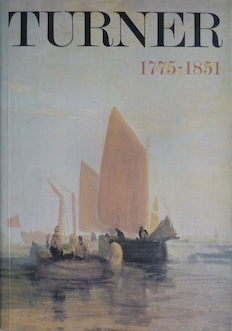|
16 XI 2024 |
4. Success at the Royal Academy 1801-12
076 - The Festival upon the Opening of the Vintage at Macon | |

| ||
|
Like ‘Bonneville' and 'Calais Pier' this was based on Turner's visit to France in 1802 but, typically of this moment in his career, the composition is blown up into an essay in the manner of Claude, the first of a long series of panoramic landscapes that continue through most of his life (e.g. Nos.237 and 486). The composition was developed in the 'Calais Pier' sketchbook (T.B.LXXXI-54, 116-17, the last two pages, a single composition, repr. Wilkinson 1974, p.60). William Seguier told Burnet John Burnet, Turner and his Works, 1852, pp.78-9) that Turner had begun the picture ‘with size colour on an unprimed canvas’ and that 'when first painted it appeared of the most vivid greens and yellows'. This vividness obviously shocked Sir George Beaumont who complained to Farington that ‘the subject is borrowed from Claude but the colouring forgotten'. On the other hand the critic of the British Press for 3 May 1803 praised the picture in a review that gives a good insight into how high Turner's reputation stood in some quarters. ‘The productions of Mr. Turner's pencil are of that extraordinary kind, that they must inevitably call forth considerable praise or blame…. The effulgence of great genius is not to be looked at by mechanical eyes, nor are her sparks to be analized by simple processes. Mr. Turner has evidently derived improvement from his continental tour, and with wonderful labour and facility has produced four paintings and two drawings since his return in last October. A view of the French galleries has stimulated his native energy, and the scenery of Switzerland and Savoy has furnished sublime features for his powers and pencil . For truth of conception, and richness of execution, Mr Turner ranks with a Reynolds and a Wilson….’ This picture was described as 'without comparison; the first landscape of the kind that has been executed since the time of Claude Lorrain, on whose works, indeed, Mr. Turner has evidently and usefully fixed his eye; and we are bold to say, that he has even surpassed that master in the richness and forms of some parts of his pictures. The scene is singularly fine, and the figures, which are many, are drawn and grouped in a style far superior to any of this Artist's former productions. But perhaps the blues are rather too powerful in the distance…’. The picture was the subject of another of the many incidents revealing Turner's tough attitude over prices. Sir John Leicester, a leading patron of the time, offered 250 guineas during the R.A. exhibition but for some reason the deal fell through. The following year he offered 300 guineas, but Turner now demanded 400, which Leicester refused; the price was, however, paid by Lord Yarborough. These transactions, recorded by Farington in May 1804, suggest that the picture was then on view in Turner's own gallery, newly opened at his own house at the corner of Harley Street and Queen Ann Street. When Lord Yarborough's son lent the picture to the British Institution in 1849 the Spectator for 16 June saw it as having been a foretaste of things to come: 'yet even here the painter is beginning to aim at impossibility, and the centre of the sky ferments with an unsuccessful effort to dash at the brightness of the sun.’ An image generated by an AI Machine Learning Model Property of the artist. | ||
